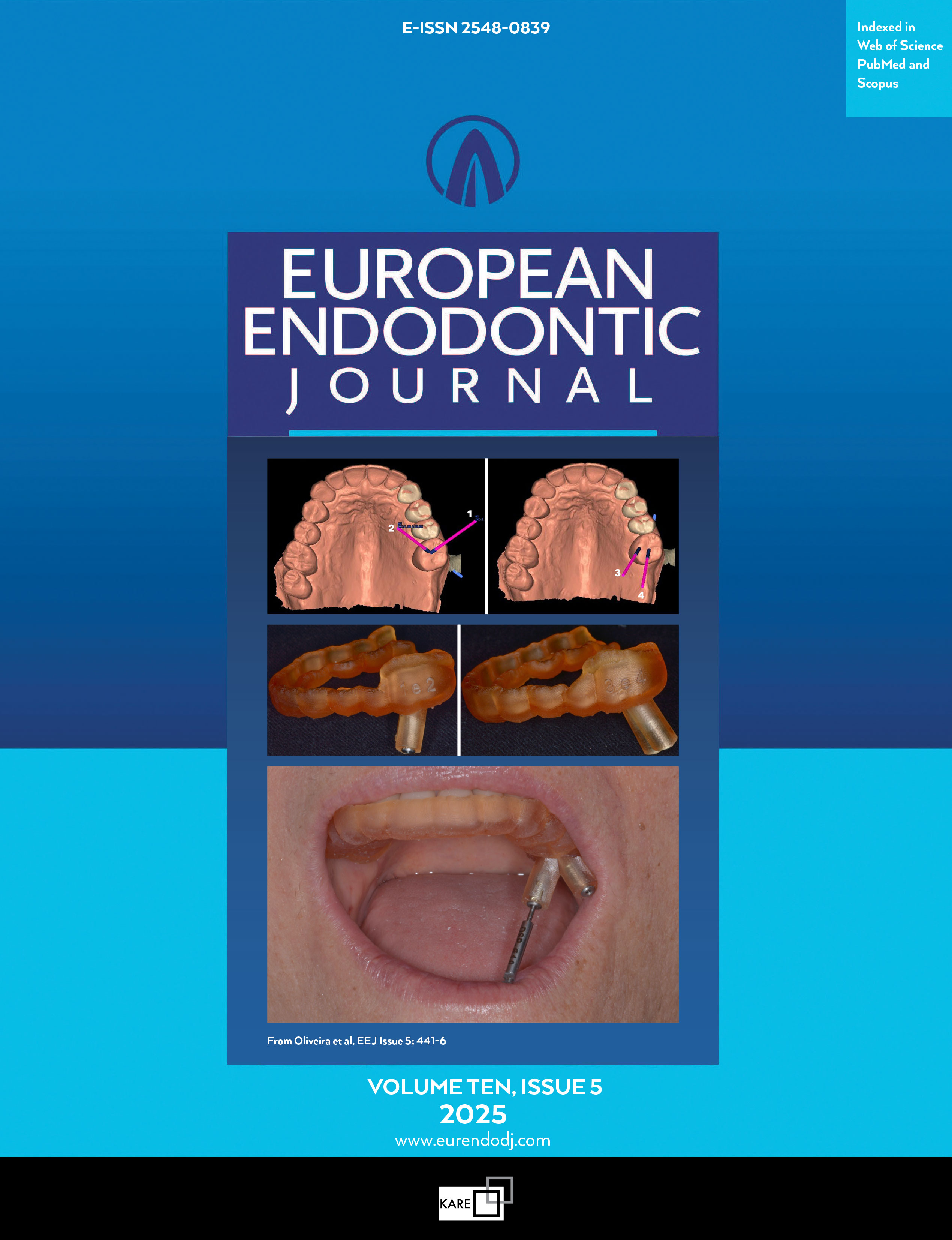Metrics
2024 IMPACT FACTOR
5 year Impact Factor
Eigenfactor Score
2024 CiteScore
Journal Citation Reports
(Clarivate 2025, JIF Rank)
The Validity of Pulp Tests on Crowned Teeth: A Clinical Study
Waleed Almutairi1, Anita Aminoshariae2, Kristin Williams3, Andre Mickel21Department of Endodontics, Qassim University, College of Dentistry, Saudi Arabia2Department of Endodontics, Faculty of Dental Medicine, Cleveland, OH, USA
3Department of Community Dentistry, Faculty of Dental Medicine, Cleveland, OH, USA
Objective: The aim of this study was to evaluate the sensitivity and specificity of electric pulp testing (EPT) using the bridging technique in comparison to a cold test on crowned teeth.
Methods: Thirty teeth were included in this study. Only one crowned tooth from each subject was included. The adjacent teeth served as controls. The crowned teeth were tested for pulp vitality using a bridging EPT technique and cold test. Vitality was confirmed upon access based on bleeding or lack of bleeding from detected root canal systems. The data was statistically analyzed using the McNamara test (P<0.05).
Results: The sensitivities of the cold test and bridging EPT were 87% and 66% respectively. Accuracy for cold and bridging EPT were 87% and 67% respectively. The cold test demonstrated a statistically significant higher accuracy and sensitivity than the bridging EPT. However, no significant difference was detected in the specificity between the two tests.
Conclusion: Both EPT and cold test should be considered as an adjunctive diagnostic tool when determining pulp status in a crowned tooth. Pulp sensitivity tests are essential but the results should be interpreted in combination with other clinical signs/symptoms. (EEJ-2020-05-111)
Manuscript Language: English
(1298 downloaded)


